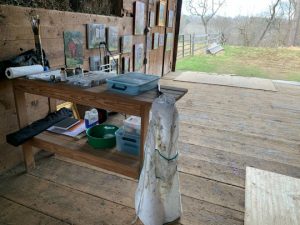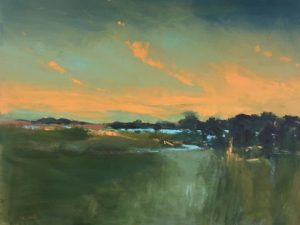The Brandywine River Museum of Art and the Westmoreland Museum of American Art began the process today of dividing up the art collection of publisher and American art proponent Richard Mellon Scaife. Scaife, who died July 4, bequeathed his art collection, which includes over 500 works, to both museums, specifying that it should be divided evenly between the two institutions.
The staff and board of the Brandywine and the Westmoreland are grateful and honored that Scaife chose to distinguish their museums with this generous act of philanthropy.
This unprecedented gift will add significantly to the permanent collections of both museums. After months of research and collaborative preliminary work, Thomas Padon, director of the Brandywine River Museum of Art, and Judith H. O'Toole, director and CEO of the Westmoreland Museum of American Art, began the selection process by choosing the most significant paintings from Scaife's exceptional collection. The process will continue over the coming week until its completion.
"I will miss the wonderful conversations Dick and I had about American artists, paintings or current issues in the field. He was always both insightful and well informed. He remembered my interest in his collection of paintings by John Kane and saw to it that they came directly to The Westmoreland after his passing. I am sure he would have wanted to be a fly on the wall during the selection process between the Brandywine and the Westmoreland. It was the kind of meeting of similar minds and keen wits that he would have greatly enjoyed," states Judith H. O'Toole, director and CEO of the Westmoreland.
Scaife had a close connection to the Westmoreland since it opened to the public in 1959, including purchasing works of art for the collection and supporting various initiatives relating to education, exhibitions and a year of events during their 50th anniversary. He left the museum $5 million, which will be used towards their current Imagine What's Possible capital and endowment campaign. In recognition of his lifelong devotion to the museum, the Westmoreland board of trustees has determined to create the position of the Richard M. Scaife director.
"Richard Scaife was a great friend to the Brandywine during his lifetime and is one of its most significant benefactors," said Brandywine's Thomas Padon. "The process of closely examining his entire collection recently brought to light very powerfully his passion for American art. Mr. Scaife's paintings both enrich and enhance the Brandywine's own holdings in many instances, such as Martin Johnson Heade and Guy Pène du Bois, bringing the first work by these artists to our collection. His interest in nineteenth- and early twentieth-century landscape and still-life paintings, in particular, aligns with the Brandywine's holdings while at the same time broadening the collection to encompass a wider spectrum of American art. His impact on future audiences at the Brandywine is immeasurable, and we are profoundly grateful to him for his extraordinary generosity."
"Dick Scaife joined the board of trustees of the Brandywine Conservancy & Museum of Art in 1978 and continued his association with the organization in various positions on the board for 36 years," stated George A. "Frolic" Weymouth, chairman of the board of the Brandywine Conservancy & Museum of Art. "He was a dear friend and a trusted advisor and he is greatly missed. Dick was passionate about art and preservation of the environment and, in addition to his gift of art, he bequeathed a 900-acre estate known as "Penguin Court," located in western Pennsylvania, to the Brandywine Conservancy, along with a $15 million endowment to care for the property in perpetuity. We are honored that he chose to entrust us with this precious natural resource."
The following is a list of ten works (five works for each museum) selected today from Mr. Scaife's collection:
Brandywine River Museum of Art selections
- Martin Johnson Heade, New Jersey Salt Marsh, ND, Oil on Canvas, 17 ½ x 36 inches, Gift from the Estate of Richard Mellon Scaife
- John Kensett, Hudson River View From Dobbs Ferry, New York, ND, Oil, 23 x 35 ¼ inches, Gift from the Estate of Richard Mellon Scaife
- Guy Pène du Bois, The Appraisal, 1926, Oil on Canvas, 38 x 28 ½ inches, Gift from the Estate of Richard Mellon Scaife
- Albert Bierstadt, Coast of California, ND, Oil on Canvas, 14 x 19 inches, Gift from the Estate of Richard Mellon Scaife
- Theodore Robinson, Yacht Club Basin, Cos Cob Harbor, 1894, Oil on Board, 19 x 22 ½ inches, Gift from the Estate of Richard Mellon Scaife
Westmoreland Museum of American Art selections
- George Inness, Moonrise, Alexandria Bay, 1891, Oil on Canvas, 30 ¼ x 45 ¼ inches, Gift from the Estate of Richard Mellon Scaife
- William Merritt Chase, Interior, Oak Manor, 1899, Oil on Canvas, Gift from the Estate of Richard Mellon Scaife
- Jasper Cropsey, Starucca Vale, 1896, Oil on Canvas, 46 ¼ x 68 ½ inches, Gift from the Estate of Richard Mellon Scaife
- Guy Pène du Bois, Rose Madder Club, 1934, Oil on Canvas, 25 x 36 ½ inches, Gift from the Estate of Richard Mellon Scaife
- John Kensett, Twilight on the Seashore, circa 1872, Oil on Canvas, 37 x 48 inches, Gift from the Estate of Richard Mellon Scaife
At a later date, another press release will be issued with further information on the art comprised in Mr. Scaife's collection and the distribution of these works between the Brandywine and the Westmoreland.
Brandywine River Museum of Art
The Brandywine River Museum of Art is home to a renowned collection of American art. Housed in a nineteenth-century mill with a dramatic three-story steel and glass addition overlooking the Brandywine River, the museum presents an incomparable setting for important works of art by leading nineteenth- and twentieth-century artists, most notably that of three generations of the Wyeth family. Also on view are signature works by artists such as William Trost Richards, Howard Pyle, Horace Pippin and Thomas Sully, as well as selections from the museum's renowned holdings of American illustration. Visitors can explore the connections between art and life on guided tours of the Andrew Wyeth Studio, the N.C. Wyeth House and Studio, and the Kuerner Farm (April through mid-November).
Brandywine Conservancy
The Brandywine Conservancy (www.brandywine.org) preserves the land and water of the Brandywine watershed for the community through source water protection, farmland preservation, and work with local governments. It has permanently protected from development more than 59,000 acres in Chester and Delaware counties in Pennsylvania, as well as New Castle County in Delaware and holds more than 400 conservation easements, most from landowners who wanted to save their property's natural, scenic and historic resources. The Conservancy was among the first land trusts in the country to be awarded accreditation by the Land Trust Accreditation Commission.
Westmoreland Museum of American Art
The Westmoreland Museum of American Art is currently operating out of a temporary location - Westmoreland @rt 30 - while the Museum undergoes a major renovation and expansion. Located at 4764 State Route 30, between Greensburg and Latrobe, Westmoreland @rt 30 features works from the permanent collection, monthly Pop-Up Exhibitions, Studio Workshops, hands-on art activities for children on Saturdays and Sundays, Art on Tap "happy hour" events on the second Friday of every month and more. Regular hours are Tuesday through Sunday from 11 a.m. - 5 p.m.
More information is available at wmuseumaa.org.




Comments